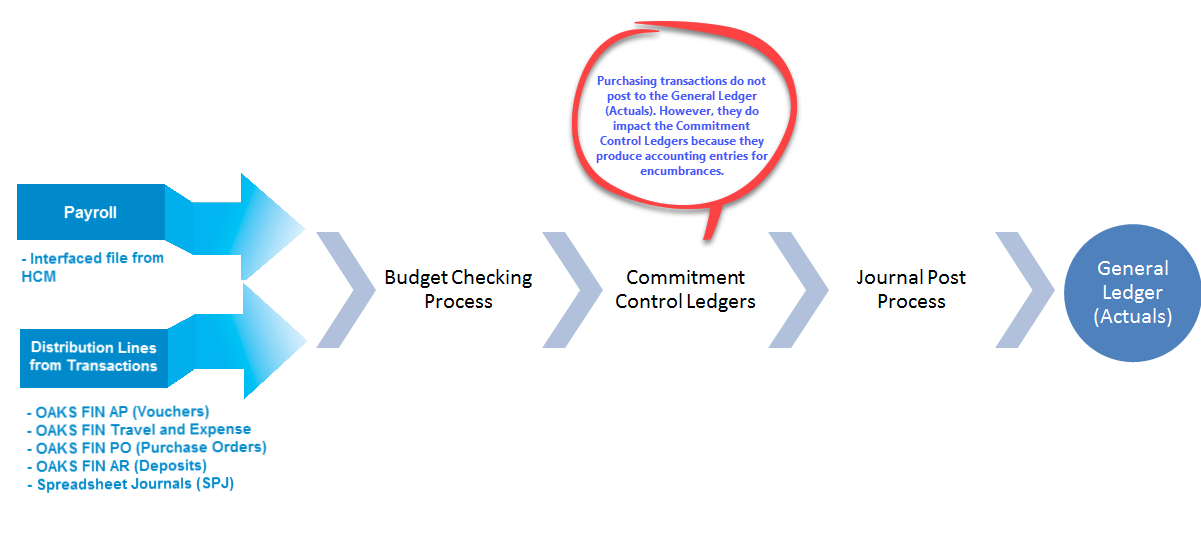
Revised: 01/20/2017
A ledger is an accounting book that facilitates the transfer of all journal entries in a chronological sequence to individual accounts. The process of recording journal entries into the ledger is called posting.
There are two main ledger types:
Commitment Control Ledgers (CC) are the ledgers used in budget checking for internal management purposes to compare actuals to budget. Only revenue and expense post to the CC ledgers. Transactions post as soon as a budget check is valid.
The General Ledger (GL) (i.e., “Actuals”) is where the financial transactions ultimately post after they have gone through the budget checking process. Various modules generate accounting entries and send these entries via journals to the ledger. This creates the financial picture for the state of Ohio.
Since most transactions are budget checked before they are posted to the GL, there can be a difference between what you see between the ledgers. Commitment Control Ledgers and the General Ledger are separate and distinct.
